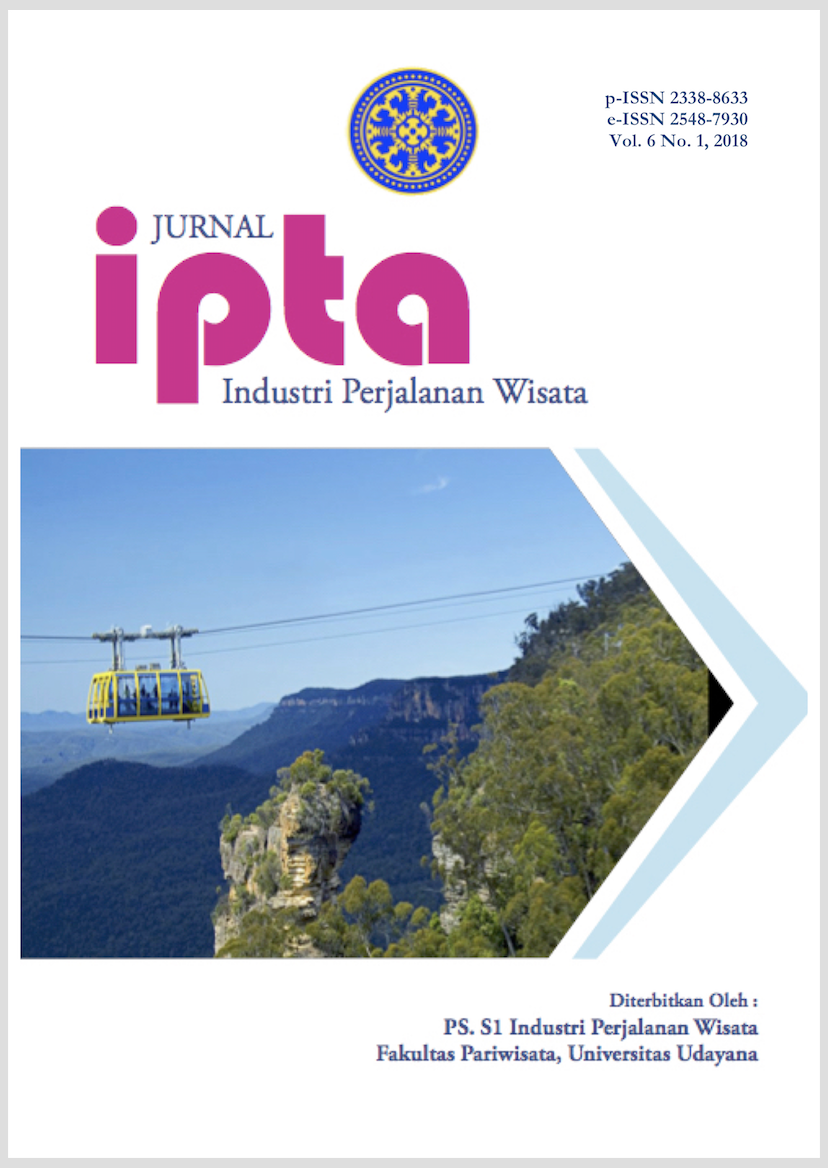PENGARUH VIRAL MARKETING TERHADAP JUMLAH KUNJUNGAN WISATAWAN INDONESIA KE KOREA SELATAN
Abstract
The aim of this research is to find out how big the influence of viral marketing that has elements of information spreading, credibility of information, expressing positive feelings, economic incentive, and helping the company towards the number of Indonesian tourists visit to South Korea, Sample determination in this study using accidental sampling method with a total of 100 respondents. Data collection techniques used questionnaires, nonparticipation observations, interviews, and literature. Data analysis techniques in this study are descriptive analysis, multiple linear regression analysis, validity and reliability test, hypothesis test, and coefficient of determination analysis using SPSS version 17.0. The results of this study indicate the influence of viral marketing towards the number of Indonesian tourists visit to South Korea is very significantly simultaneous and partial effect with a value of 91,6%. For the economic incentive dimension, the result of analysis is 3,705, helping the company 3,311, credibility of information 2,461, information spreading 2,220, and expressing positive feelings 2,020. The data collected through online questionnaires to the respondents who have ever visited South Korea.
Downloads
References
Badan Pusat Statistik, 2017, Jumlah Kunjungan Wisatawan Ke Indonesia 2017, Diakses pada Desember 2017, dari https://www.bps.go.id/pressrelease/2017/12/01/1468/jumlah-kunjungan-wisman-ke-indonesia-desember-2017-mencapai-1-15-juta
Hasan, A. dan Setyaningtiyas, N.W. (2015). Pengaruh Electronic Word of Mouth Pada Media Sosial Facebook Terhadap Keputusan Berkunjung Ke Desa Wisata Nglanggeran Gunungkidul. Jurnal Media Wisata, Volume 13, No. 1, 224-238.
Herliani, Putri. 2017. Pengaruh Korean Wave Terhadap Animo Masyarakat Indonesia Untuk Berwisata Ke Korea Selatan. Bandung: Universitas Pasundan.
Inews Finance, 2018, Ini Tujuan Penerbangan Favorit Pengunjung Selama GATF 2018, Diakses Pada Maret 2018, dari http://www.inews.id/finance/read/ini-tujuan-penerbangan-favorit-pengunjung-selama-gatf-2018
Kim, B.R. (2015). Past, Present, and Future of Hallyu (Korean Wave). American International Journal of Contemporary Research, Volume 5, No. 5, 154-160.
Korea Tourism Organization, 2017, Jumlah Kunjungan Wisatawan Indonesia ke Korea Selatan, Diakses Pada Desember 2017, dari https://english.visitkorea.or.kr/enu/index.kto
Lee, S.J. (2011). The Korean Wave: The Soul of Asia. The Elon Journal of Undergraduate Research in Communications, Volume 2, No. 1, 85-93.
Mastercard, 2017, Report – Mastercard Future of Outbound Travel in Asia Pasific (2016 to 2021), Diakses Pada Desember 2017, dari https://newsroom.mastercard.com/asia-pasific/documents/the-future-of-outbound-travel-in-asia-pasific-2016-to-2021/
Pramita, Y. dan Harto, S. (2016). Pengaruh Hallyu Terhadap Minat Masyarakat Indonesia Untuk Berwisata Ke Korea Selatan. JOM FISIP, Vol. 3, No. 2, 1-15.
Sudiarta, I.N. (2012). Membangun Citra (Destinasi) Pariwisata Seberapa Pentingkah?. Jurnal Ekonomi dan Pariwisata, Vol. 7, No. 31, 60-75.
Sudiarta, I.N. dan Suardana, I.W. (2016). Tourism Destination Planning Strategy: analysis and implementation of marketing city tour in Bali. Procedia - Social and Behavioral Sciences 227, 664-670 Published by: Elsevier.
Sugiyono. 2014. Metode Penelitian Kauntitatif dan Kualitatif dan R&D. Bandung: Alfabeta.
Syarief, Muh Nizar. 2016. Kerjasama Indonesia – Korea Selatan Di Bidang Manufaktur. Makassar: Universitas Hasanuddin.
UNWTO, 1999, Pengertian Pariwisata, Diakses Pada Februari 2018, dari http://www2.unwto.org/
We Are Social, 2017, The Most Active Social Media Platforms, Diakses Pada Desember 2017, dari https://wearesocial.com/uk/
Zakaria, Gitta Parlina. 2015. Pengaruh Museum Experience Terhadap Perilaku Pasca Berkunjung. Bandung: Universitas Pendidikan Indonesia.





